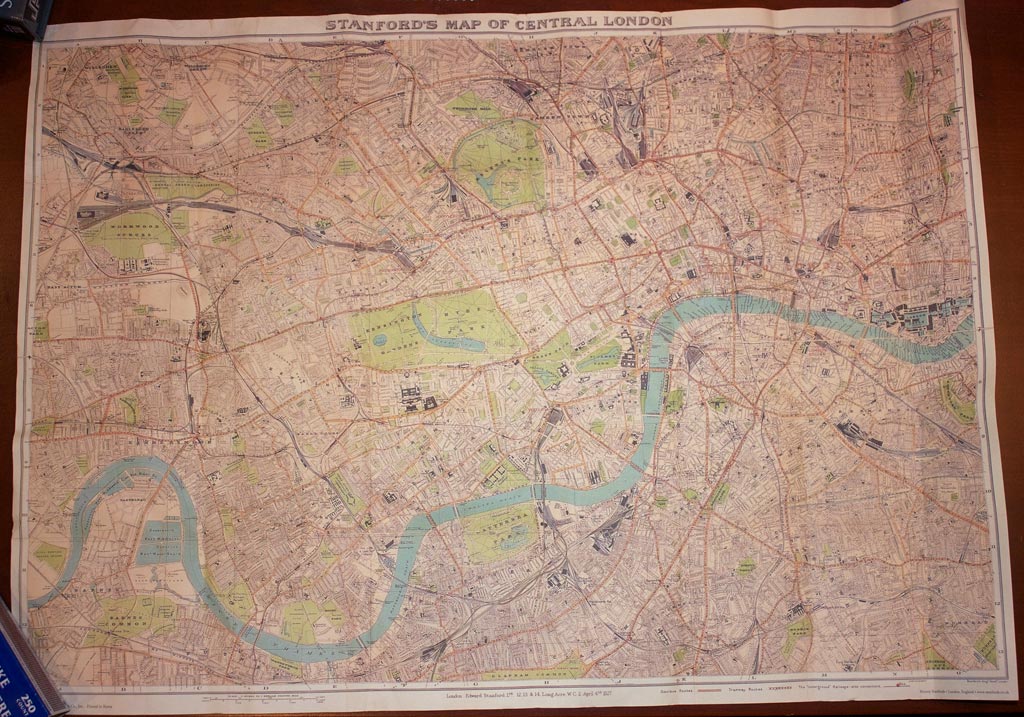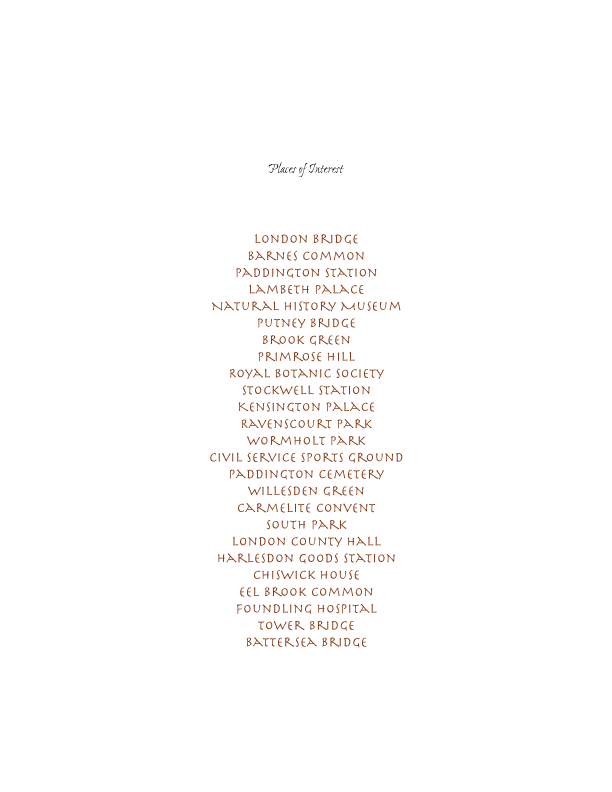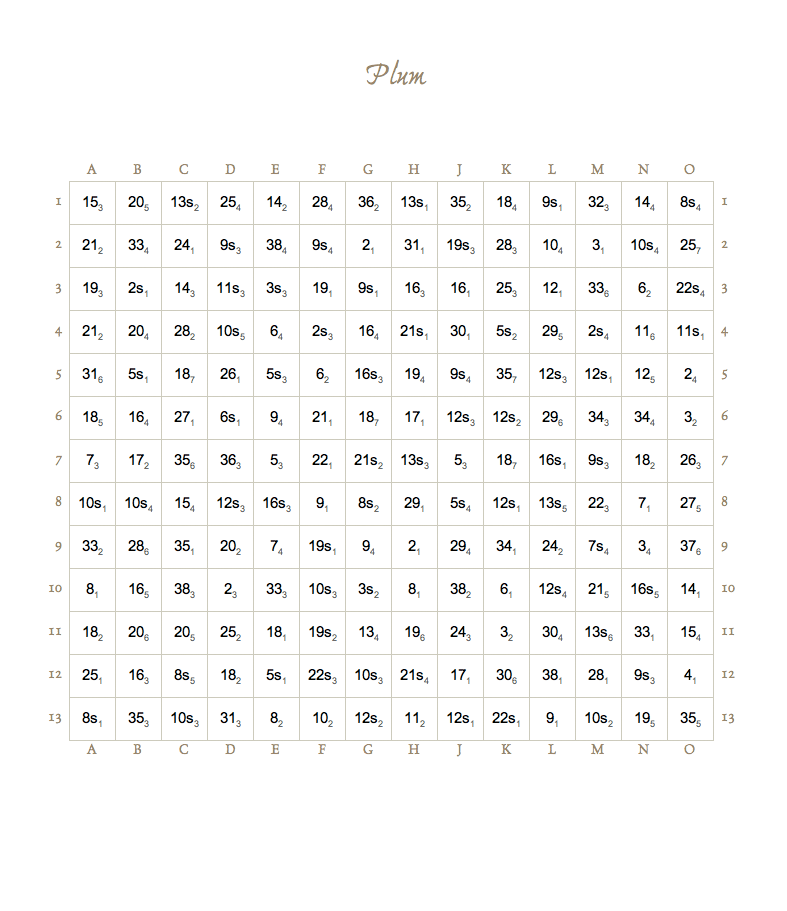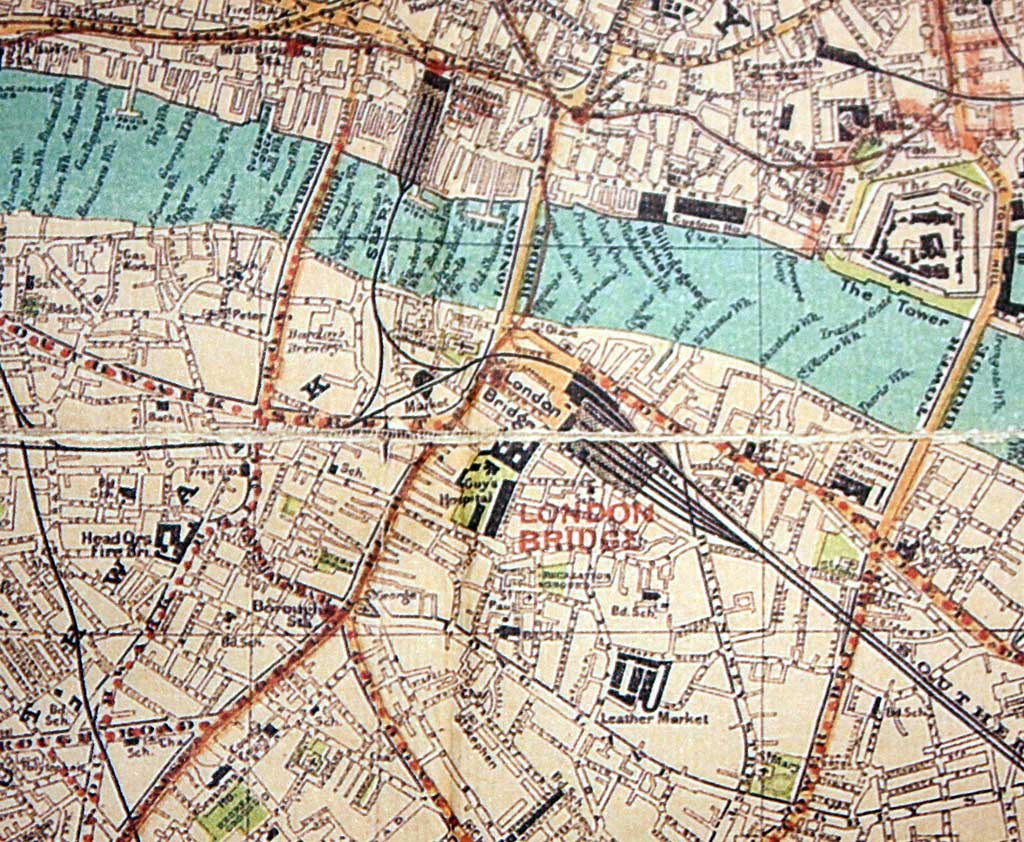Teams arriving at their first location 'found' a cardboard shipping tube with a bright colored tag and their team name. The ease of discovering the tube varied based on the location. In one location team members had to perform a 2-3 minute climb up steep old steps to find the tube resting in plain site; another location was at a quarry with the tube and most of the tag buried in a pile of gravel; another location was in the middle of a field of 2' ferns, hidden under the ledge of a rock.
Each tube contained:
- Some stickers and candy (intended for children dragged along in the game)
- A detailed 4' × 3' map of London from 1927:

- A sheet of paper labeled "Places of Interest" and another with the team name along the top and a puzzling grid below:


Solution
The first step in this challenge was to find on the map all the locations listed on the paper. This could be challenging due to the size and small writing on the map, but some reasoning about many places helped speed the process. For example, the four bridges would of course cross the river, the eight commons and parks would show green grass, and railway stations would be along rail lines. Still, there was a lot of detail to be scanned by the team. Below is a close up of London Bridge on the map; the full map is about 45 times larger than this image.

The map itself was labeled with the letters "A"-"O" across the top and bottom (though excluding the letter "I") and the numbers 1-13 down the sides. Each location thus yielded a spot on the map. London Bridge, for example, yields a coordinate of M7.
The second step of the challenge was to find the values in the grid corresponding to these locations, in order. Looking up M7, for example, yields a grid value of 9s3.
The third step of the challenge was the hardest: figuring out what those values meant. The presence of the 's' on some grid values was the clue. On multiple family reunions of the past, every family member was given a t-shirt with a 'team number' on the back, indicating their age-ordered sequence in the family. My mother, the oldest, had a '1' on the back of her shirt. My father had a '1s', for 'spouse'. Each grid value referred to a specific family member.
The fourth step in this challenge was to properly write down the names of all family members, in age order. For example, the 9th family member happens to be me, while 9s corresponds to my wife, Lisa. The subscripted 3 indicated the third letter of her name ('S').
Performing this location->grid->name->letter translation for each location in order yielded the message "SWAPGRIDLETTERSANDNUMBERS". (Or it should have; see below.)
Performing the lookups again after transposing the grid gave the teams their next location. The various clues they received were: SIGNATTHEMTNNORTHENTRANCE, SWIMBYWATERFALLROPEONTREE, ATOPOFTHESTAIRSTOTHETOWER, TREEALONEINAFIELDBYTHEOSH, QUARRYWHERETHREEROADSMEET, CLIMBATOPWHEREBOATSDODOCK.
There was, embarrassingly, a flaw in this puzzle. The ordered list of family member names I used to generate the grid was wrong. I somehow failed to include two family members, which caused all numbering—and thus all letters—from their number and higher to be wrong. About one in four of properly-decoded letters was wrong. Luckily, we had a way for teams to get hints, and eventually every team had to be given their next location directly.
Continue on to The Archery Challenge, or see the results of this challenge.